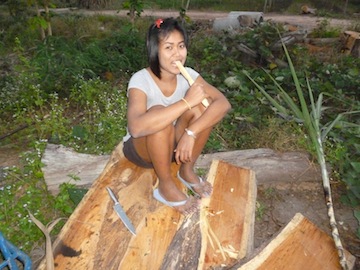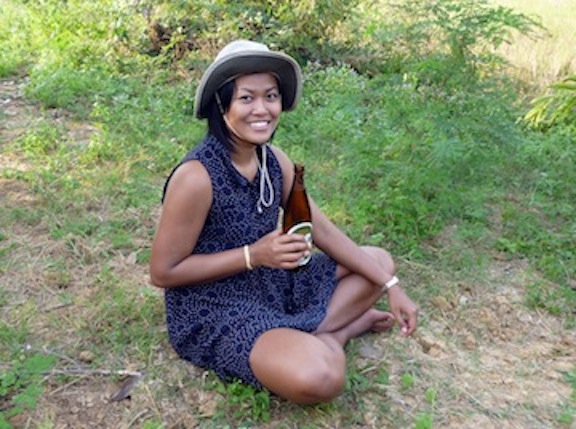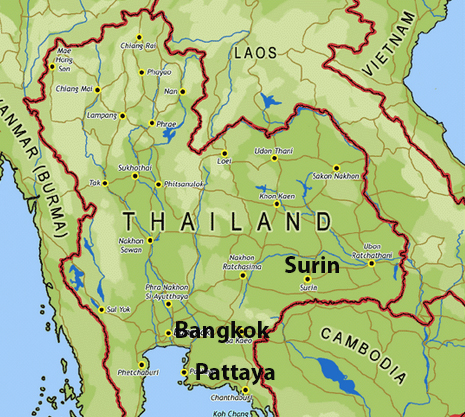PHANOM DONG RAK:
SURIN PROVINCE
SURIN is both a province of Thailand and its capital city. It lies in the southernmost part of the Isaan District of Thailand.
Isaan is the northeastern region of Thailand. It is located on the Khorat Plateau, bordered by the Mekong River (along the border with Laos) to the north and east, by Cambodia to the southeast and the Prachinburi mountains south of Nakhon Ratchasima. To the west it is separated from Northern and Central Thailand by the Phetchabun mountain range.
The main language is Isaan Lao, which is a dialect of the Lao language. Currently written with the Thai alphabet (instead of the slightly different Lao alphabet), Isaan Lao belongs to the Chiang Seng and Lao–Phutai language groups, which along with Thai are members of the Tai languages of the Tai–Kadai language family. Thai is also spoken by almost everyone and is the language used in education. Khmer, the language of Cambodia, is widely spoken in areas along the Cambodian border: Buriram, Surin, and Sisaket. The people are aware of their Lao ethnic origin, but Isaan has been incorporated into the modern Thai state.
About 450 kilometers from Bangkok and 50 kilometers from the Cambodian border, Surin is an ancient historical province from the Khmer period. This province is regarded as the land of elephants, with around 300-500 wild elephants.
The Surin Provincial Administrative Organization has carried out a project known as “Elephant World,” for elephant conservation. Listed as an endangered species, the Thai elephant is regarded as the national animal. Poaching of wild elephants is forbidden and captive or domestic elephants need to be registered and be given an identity certificate.
Surin is famous for organic Hom Mali rice, or Thai jasmine rice, as well. The brand of Hom Mali is well-known worldwide, especially in the high-end market. The province has also earned a reputation of its fine Thai silk and notable silver beads. The town of Surin is surrounded by villages that produce silk and a variety of handicrafts.
There are numerous ancient Khmer sanctuaries, which testify to the historical significance of this province. The population of Surin is 1.38 million, with about 342,000 households.
Friday 13th:
Left the apartment at 7:30am and taxi to bus station. Only 10 minutes wait for bus to leave for the 7.5 hour trip to Prasat in Surin Province.
Met up with Aom’s mum and cousin in Prasat town. Went food shopping in Prasat market and then 45 miles off to Phanom Dom Rak village near to where the family home is.
The new house being built has now got full walls and a roof. Last time I was there, there were only rows of concrete pillars in muddy holes.
Saturday 14th:
A gathering of the clans so to speak. Dozens of aunts, uncles, cousins appear all talking at once and all helping to produce a mass of food for the forthcoming “Welcome Home”. Not one, other than Aom, speaking a word of English and me with a mere hint of Thai made for some interesting “conversation” and hand signals… but they all love it. In any case they speak a dialect of Isaan mainly (see above); Cambodian border being only 20kms away.
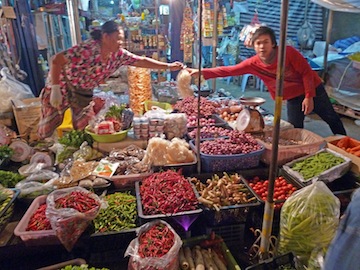
| 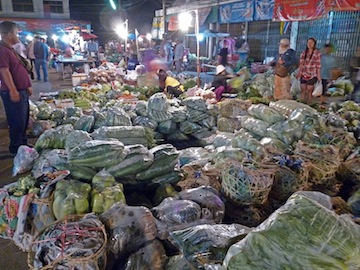 |

| 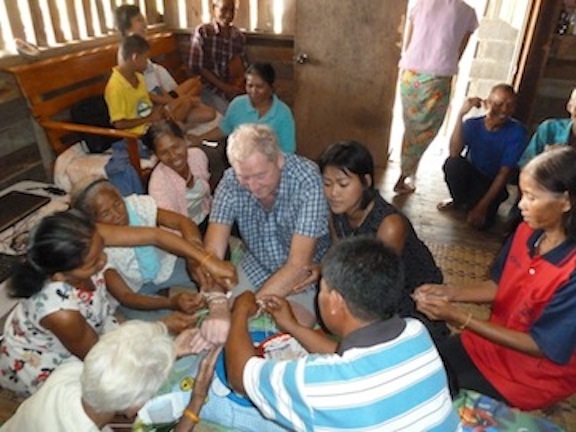 |
- TOP ROW: Prasat market at 04:00. Very busy with vast array of fruit, vegatables, meat and fish.
- LOWER LEFT: With the Khongjaidee family. Aom's mum and dad.
- LOWER RIGHT: The welcoming back home ceremony with most of the family.
Phanom Dong Rak Village:
This where Aom’s house and farm is located. Dispel any images you may have of a village as such with groups of cottages/house close together. PDR is a widespread number of homesteads.
There’s no real centre to the “village”. There’s shop and an eatery and that’s about it for anything communal. For things like a post office, bank, bar/pub or supermarket you have to get 45 miles to Prasat, the nearest town. However, everyone knows everyone else and everything you do is transmitted magically within seconds.
Most of the houses are traditional Thai; wooden on stilts with outside thatched gazebo-type structures where the families meet, eat and sometimes cook on clay barbecue-like stoves. Charcoal is produced in a big clay furnace on the farm.
Aom’s farm: There are no animals kept apart from the dogs and shed loads of chickens, guinea fowl, ducks, geese and other feathered things who pinch your food as soon as you turn your back for a second.
The occasional pig appears but that’s normally bumped off within weeks and eaten.
The farm is largely agriculture, and there are plans to start cattle herding here soon which should bring in good profit.
The main crops are sugar-cane, cassava*, maize, mango, rice (of course), papaya, coconut, banana and rubber-tree.
The family buffalo was dispensed with a few years ago and replaced with single-cylinder diesel-powered, open-engined, lethal contraptions that chug around.
Cooking is done outdoors on a big gas hob and on small, round clay “barbecue” stoves.
Sleeping is under mosquito-nets with wide-open windows. There is no air-conditioning; electric fans only when it gets too hot.
Life on the farm is fairly primitive, to be honest, and takes some getting used to; no luxuries here. A shower as such is pouring rain-water over you in the outside enclosure; water is around an ambient 28ºC so it’s not a painful experience.
Lie-ins are almost an impossibility as dawn is heralded by a cacophony of quacks from over 40 ducks ... and then there are the cockerels!

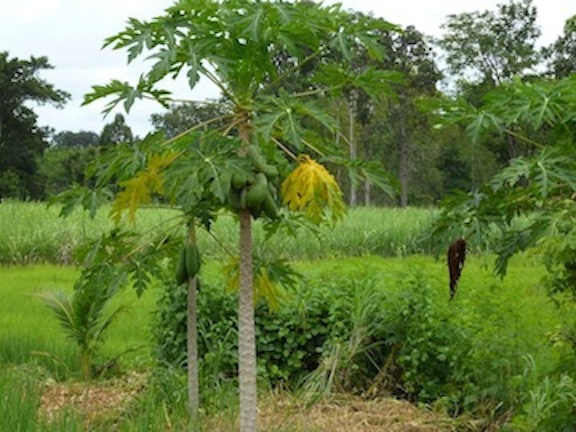
| 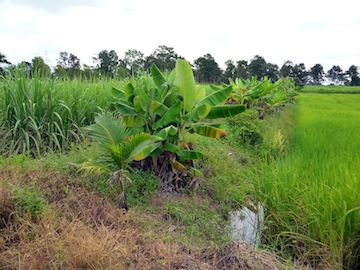 |
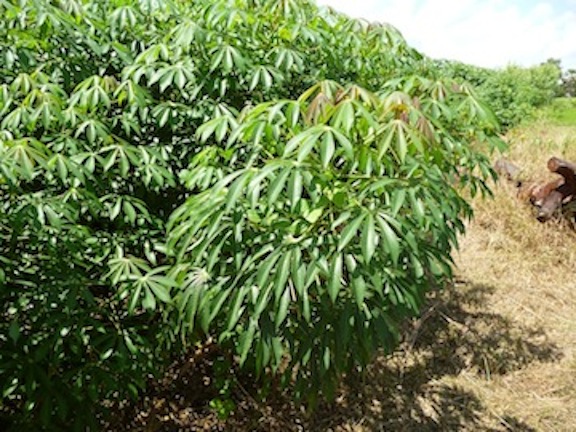
| 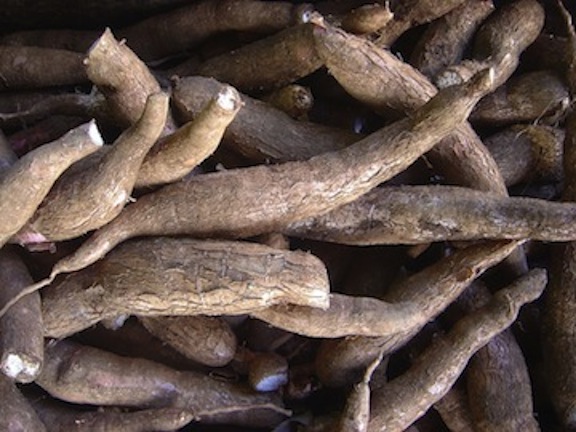 |
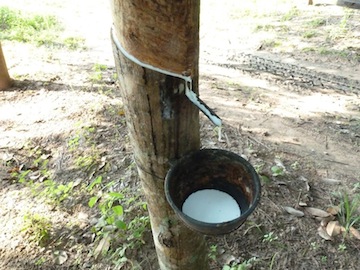
| 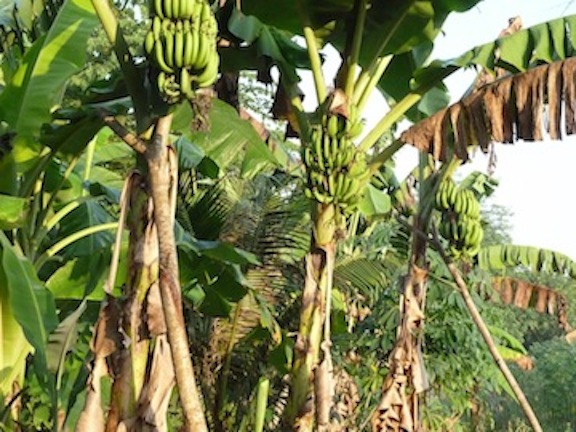 |
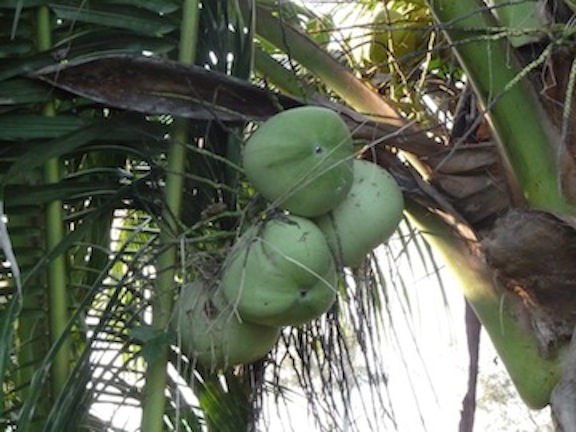
| 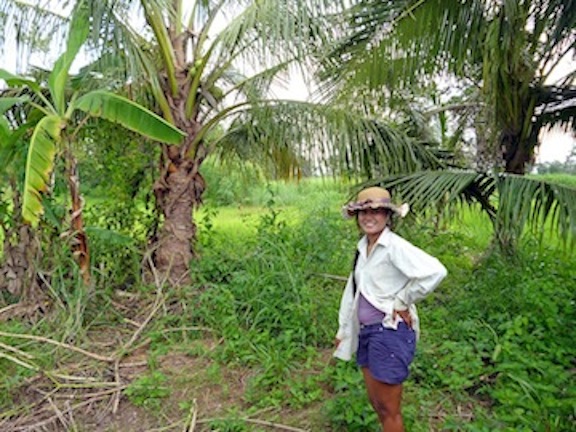 |
- TOP LEFT: Papaya tree
- TOP RIGHT: Sugar-cane plantation on the left; young banana trees in the centre and rice 'paddy' on the right.
- SECOND ROW LEFT: Cassava plantation.
- SECOND ROW RIGHT: Cassava edible roots.
- THIRD ROW LEFT: Rubber tree; sap collector.
- THIRD ROW RIGHT: Banana trees with unripe fruit.
- BOTTOM ROW LEFT: Unripe Coconuts.
- BOTTOM ROW RIGHT: Banana,
 coconut and a Thai lady.
coconut and a Thai lady.
*Cassava:
Cassava also called manioc, balinghoy, mogo, mandioca, kamoteng kahoy, tapioca and manioc root is a perennial woody shrub with an edible root, which grows in tropical and subtropical areas such as here in Thailand.
It is rich in carbohydrates, calcium, vitamins B and C, and essential minerals. However, nutrient composition differs according to variety and age of the harvested crop, and soil conditions, climate, and other environmental factors during cultivation.
Apart from food, cassava is very versatile and its derivatives and starch are applicable in many types of products such as foods, confectionery, sweeteners, glues, plywood, textiles, paper, biodegradable products, monosodium glutamate, and drugs. Cassava chips and pellets are used in animal feed and alcohol production.i>
Coconut preparation courtesy Master Chef Khemjira.

| 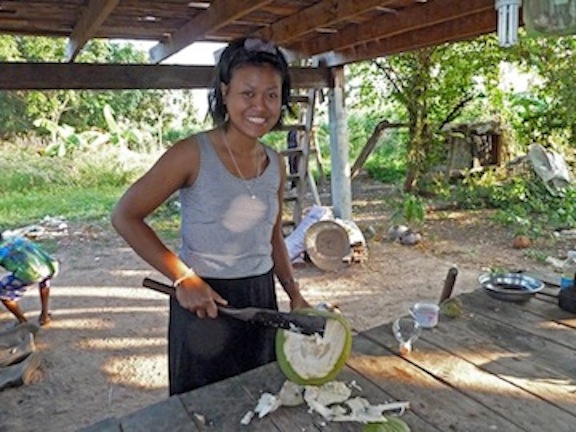 |
TOP LEFT: Fresh coconut for lunch.
TOP RIGHT: My chef preparing that same coconut for a snack lunch.
BOTTOM LEFT: Aom munching on some fresh sugar-cane.
BOTTOM RIGHT: Country girl relaxing with a shared beer.













 coconut and a Thai lady.
coconut and a Thai lady.

